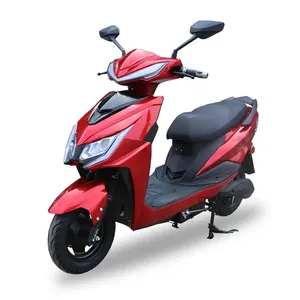Phổ biến trong ngành của bạn

An toàn entes de seguridad Alta calidad ANSI Z87 công nghiệp bảo vệ mát chống sương mù Mắt kính bảo vệ kính an toàn cho nam giới
0,45 US$ - 0,85 US$
Đơn hàng tối thiểu: 100 Cái
Vận chuyển mỗi chiếc: 1,34 US$


ANSI Z87.1 bảo vệ phòng thí nghiệm an ninh rõ ràng Z87 kính an toàn chống sương mù Goggle bảo vệ mắt lentes de seguridad kính công nghiệp
0,21 US$ - 0,85 US$
Đơn hàng tối thiểu: 100 Cái
Vận chuyển mỗi chiếc: 1,60 US$


Kính mát chất lượng cao bất phim Z87.1 bán buôn phân cực người đàn ông thể thao Kính mát cho ngoài trời
5,49 US$ - 6,27 US$
Đơn hàng tối thiểu: 8 Cái


DAIERTA Giảm Giá Kính Bảo Hộ Lao Động Công Nghiệp Kính Bảo Vệ Mắt Chống Trầy Xước Chống Sương Mù
Sẵn sàng vận chuyển
0,23 US$ - 0,27 US$
Đơn hàng tối thiểu: 480 Cái
Vận chuyển mỗi chiếc: 0,48 US$


2023 ngoài trời Kính mát cho thể thao Kính mát cực Kính mát thời trang thể thao tùy chỉnh kính đi xe đạp
0,79 US$ - 0,89 US$
Đơn hàng tối thiểu: 50 Cái


Ant5ppe 2 trong 1 người đàn ông phụ nữ làm việc bảo vệ mắt mạnh mẽ tác động kháng chống-scratchgoggles kính an toàn với có thể tháo rời Đền
2,00 US$ - 2,60 US$
Đơn hàng tối thiểu: 3000 Cái
Vận chuyển mỗi chiếc: 1,79 US$

2023 thiết kế mới giá rẻ an toàn ngành công nghiệp làm việc kính chống sương mù scratch kính tác động
0,30 US$ - 0,50 US$
Đơn hàng tối thiểu: 480 Cái

Chống sương mù công nghiệp làm việc Z87 an toàn Kính phong cách biểu tượng tùy chỉnh chống sương mù EN166 hàn laser an toàn bảo vệ kính Eyewear
0,45 US$ - 0,70 US$
Đơn hàng tối thiểu: 2 Cái
Vận chuyển mỗi chiếc: 8,48 US$

Có Bán Sỉ Kính Cào Sa Mạc Kính Chiến Thuật Kính CS Được Trang Bị Súng Sơn Chống Cháy Nổ
2,29 US$ - 4,19 US$
Đơn hàng tối thiểu: 10 Cái

Bán buôn ANSI/CE kính hàn có thể điều chỉnh ban nhạc năng lượng mặt trời Auto thẫm màu thợ hàn kính an toàn
12,00 US$ - 15,00 US$
Đơn hàng tối thiểu: 1 Cái
Vận chuyển mỗi chiếc: 18,56 US$

Sang Trọng An Toàn Goggle Chống-Giật Gân Gió Bụi Bằng Chứng Kính Mắt Bảo Vệ Kính Cho Công Việc Phòng Thí Nghiệm Công Nghiệp Thể Thao Đi Xe Đạp Cắm Trại
0,45 US$ - 0,82 US$
Đơn hàng tối thiểu: 10 Cái
Vận chuyển mỗi chiếc: 1,79 US$

190nm-550nmnm od5 + 800nm-1100nm od6 + UV & Blue & ánh sáng màu xanh lá cây thiết bị mỹ phẩm loại bỏ hình Xăm Laser bảo vệ kính an toàn
16,00 US$ - 19,00 US$
Đơn hàng tối thiểu: 10 Cái
Các danh mục hàng đầu
Giới thiệu về kính an toàn tại trung quốc 2
Alibaba.com cung cấp các sản phẩm 2537 kính an toàn tại trung quốc 2. Có rất nhiều kính an toàn tại trung quốc 2 lựa chọn dành cho bạn, chẳng hạn như công nghiệp, làm việc, và bảo vệ mắt kính an toàn. Bạn cũng có thể chọn từ goggle, bảo vệ kính, và thời trang kính an toàn tại trung quốc 2. Cũng như từ pc, polycarbonate, và pvc kính an toàn tại trung quốc 2.Và bất kể kính an toàn tại trung quốc 2 là chống sương mù, anti-scratch, hay tác động kháng.




















